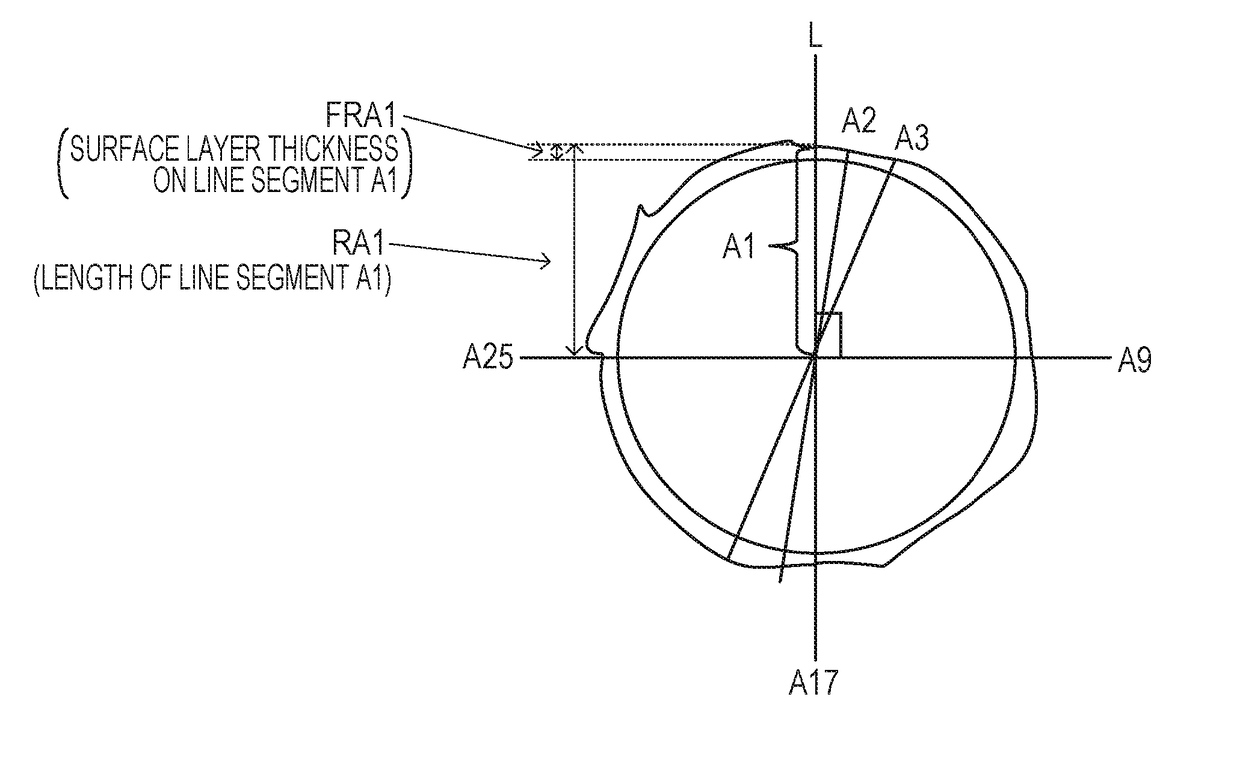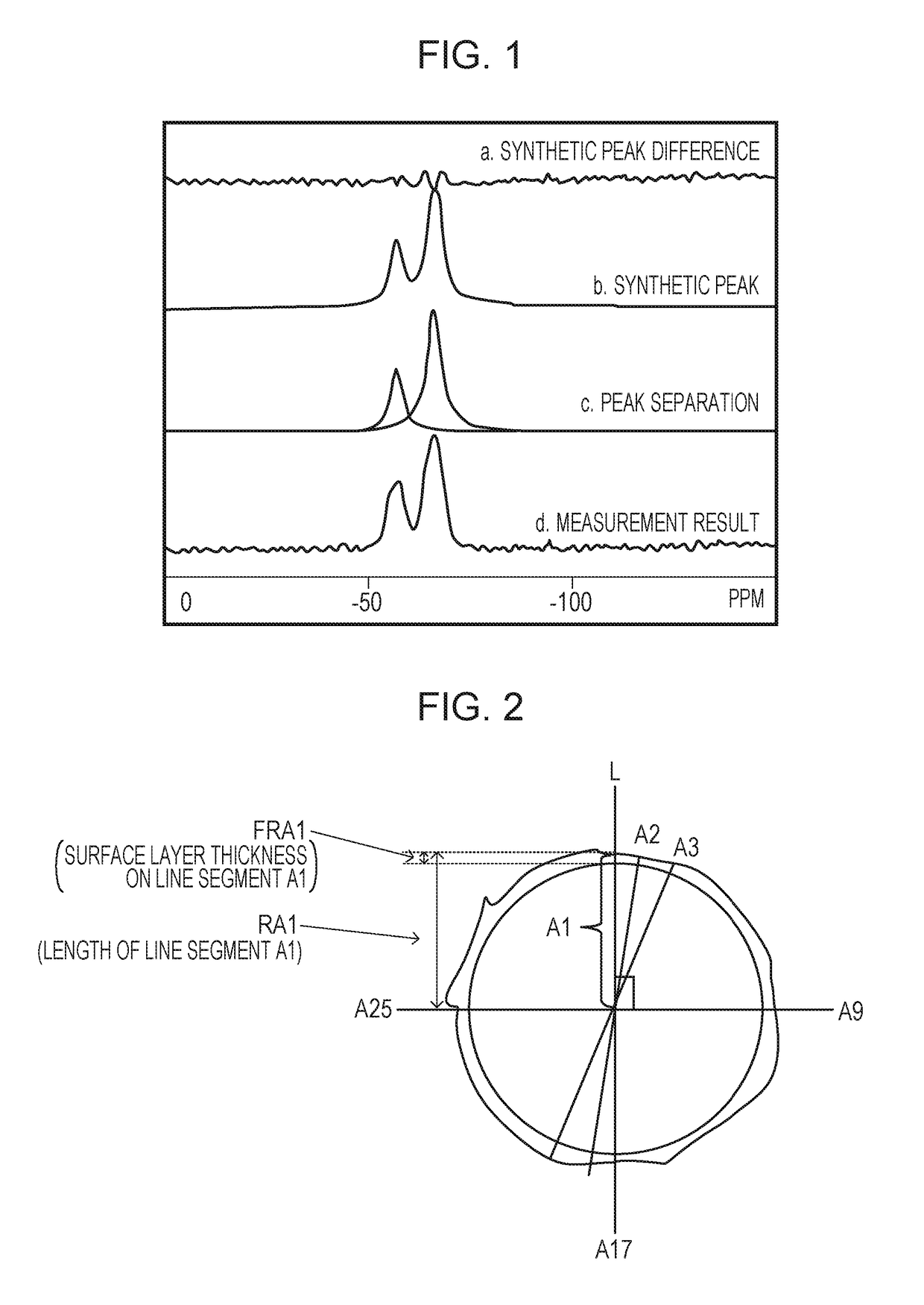Toner for electrophotographic processes and electrostatic printing processes
a technology of electrophotographic processes and toners, applied in the field of toners, can solve the problems of changing the amount of electrostatic charge of toners and members, with toners members are liable to occur, so as to reduce the surface free energy of each surface layer, inhibit the soiling of members, and improve the flowability
- Summary
- Abstract
- Description
- Claims
- Application Information
AI Technical Summary
Benefits of technology
Problems solved by technology
Method used
Image
Examples
example 1
Preparation of Binder Resin Particle Dispersion
[0214]First, 89.5 parts of styrene, 9.2 parts of butyl acrylate, 1.3 parts of acrylic acid serving as a monomer that imparts a carboxy group, and 3.2 parts of n-lauryl mercaptan were mixed together to prepare a solution. A solution of 1.5 parts of Neogen RK (from Dai-ichi Kogyo Seiyaku Co., Ltd.) in 150 parts of ion-exchanged water was added to the solution and dispersed. A solution of 0.3 parts of potassium persulfate in 10 parts of ion-exchanged water was added to the resulting mixture while the mixture was slowly stirred for 10 minutes. After the system was filled with nitrogen, the mixture was subjected to emulsion polymerization at 70° C. for 6 hours. Upon completion of the polymerization, the reaction mixture was cooled to room temperature. The addition of ion-exchanged water to the reaction mixture resulted in a resin particle dispersion having a solid content of 12.5% by mass and a median diameter of 0.2 μm on a volume basis. A ...
example 2
[0255]Toner 2 was produced in the same manner as the production example of toner 1, except that phenyltriethoxysilane was used as the organosilicon compound added and that the amount of the organosilicon compound added was changed as listed in Table 1. Table 2 lists the analytical results of toner 2. Table 3 lists the evaluation results.
example 3
[0256]Toner 3 was produced in the same manner as the production example of toner 1, except that the amount of the organosilicon compound added and the pH value after the pH adjustment were changed as listed in Table 1. Table 2 lists the analytical results of toner 3. Table 3 lists the evaluation results.
PUM
| Property | Measurement | Unit |
|---|---|---|
| resistivity | aaaaa | aaaaa |
| thickness | aaaaa | aaaaa |
| thickness | aaaaa | aaaaa |
Abstract
Description
Claims
Application Information
 Login to View More
Login to View More - R&D
- Intellectual Property
- Life Sciences
- Materials
- Tech Scout
- Unparalleled Data Quality
- Higher Quality Content
- 60% Fewer Hallucinations
Browse by: Latest US Patents, China's latest patents, Technical Efficacy Thesaurus, Application Domain, Technology Topic, Popular Technical Reports.
© 2025 PatSnap. All rights reserved.Legal|Privacy policy|Modern Slavery Act Transparency Statement|Sitemap|About US| Contact US: help@patsnap.com



